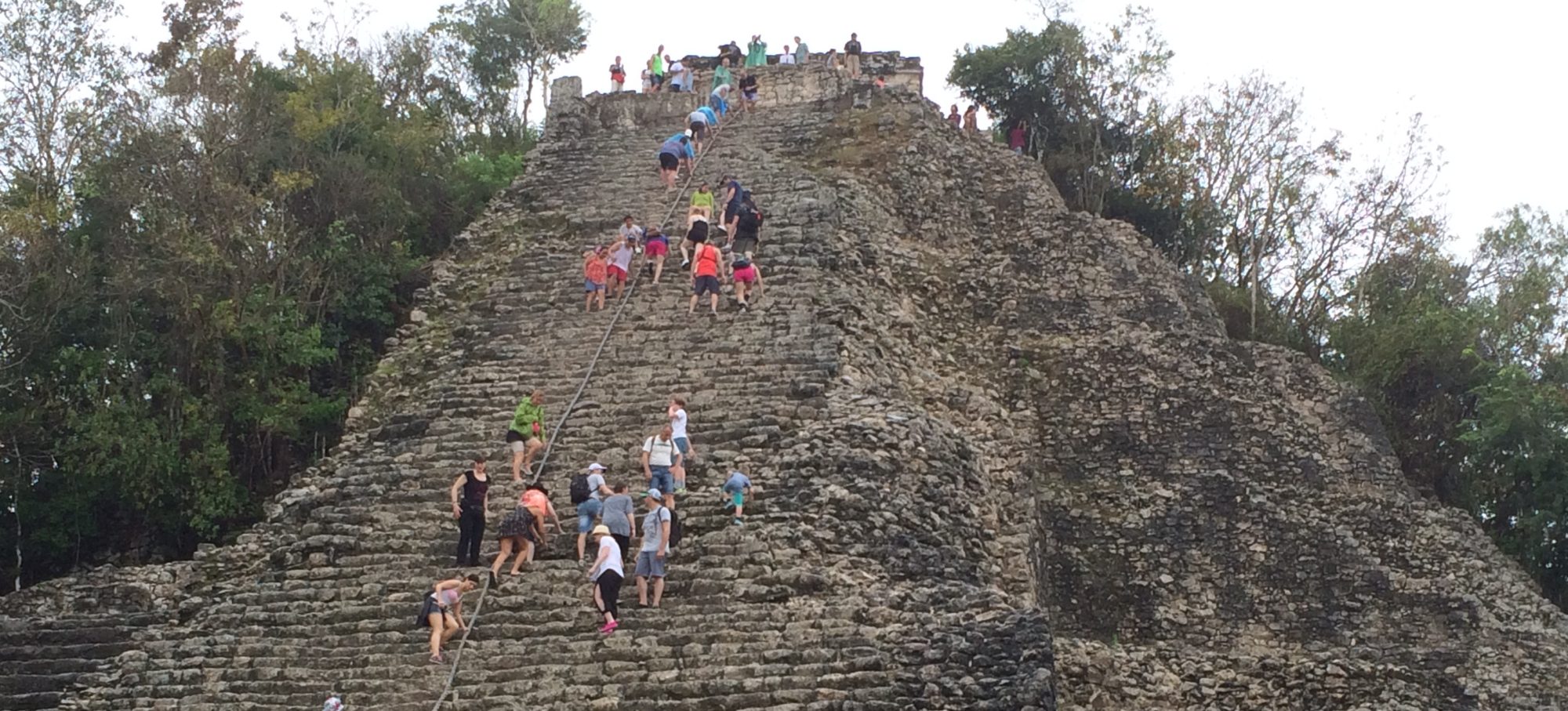February 16, 2019 10 am at Penn Museum Dr. Élodie Dupey García, Instituto de Investigaciones Históricas, UNAM and Dr. Gabrielle Vail, University of North Carolina, Chapel Hill: “Cultural Interactions in Late Postclassic Mesoamerica: Exploring Cognate Almanacs in the Borgia Group and Maya Codices”
This presentation explored connections between the Codex Vaticanus B, commonly attributed to the “Borgia group” codices painted by scribes from the region of Central Mexico, and codices from the Maya tradition. Examination of the Vaticanus B manuscript, housed in the Vatican, reveals that six of its 96 pages had been partially or totally resurfaced in late pre-Columbian or early colonial times (i.e., covered with new white backgrounds using materials different from those of the original), after which they were repainted with different palettes of colors that also differed from that of the original. While the almanacs from the 90 pages that were not repainted compare well with the structure and format associated with the other Borgia group codices commonly believed to have been painted by Nahua peoples from Central Mexico, the repainted pages deviate in a number of significant ways from the other Borgia manuscripts, in particular the Codex Borgia. Comparative analysis undertaken by Élodie Dupey García and Jamie E. Forde suggests that the repainted scenes share certain affinities with manuscripts from southeastern Puebla and the Mixteca region, which were inhabited by different ethno-linguistic communities. Additionally, the presenters have found that the repainted pages of the Vaticanus B also show similarities to almanacs from the Dresden and Madrid codices, believed to have been painted in the northern Maya lowlands during the Late Postclassic period, likely sometime in the 14th or 15th centuries. Our discussion focused in particular on sections in these codices that emphasize planting, emergence from the earth, giving birth (to the rains, as well as time and space), and to connections between scorpions and deer hunting/trapping and warfare.
Élodie Dupey García serves as a researcher in Mesoamerican history at the Instituto de Investigaciones Históricas of the Universidad Nacional Autónoma de México in Mexico City. She received her Ph.D. in the history of religions at the École Pratique des Hautes Études in Paris, France. She has received a fellowship in Pre-Columbian Studies from Dumbarton Oaks Research Library and Collection (Washington, D.C., 2013-2014) and a scholar grant from The Getty to participate in the annual theme “Art and Materiality” at the Getty Research Institute (Los Angeles, 2016). Dupey García’s scholarly interests focus on the cultural history of Pre-Columbian Mesoamerica, especially on the topics of color, smell and olfactory sensibility, as well as meteorological phenomena (in particular, wind and rainbows) in Nahuatl culture. She is the author of the book Nombrar y pensar el color en la cultura náhuatl prehispánica (in review) and of several articles published in peer-reviewed journal. She is the editor of the volumes Painting the Skin. Pigments on bodies and codices in pre-Columbian Mesoamerica (University of Arizona Press, in press) and De olfato. Aproximaciones a los olores en la historia de México (Secretaría de Cultura, Fondo de Cultura Económica, in press).
Gabrielle Vail received her Ph.D. in anthropology from Tulane University, with a specialization in Maya archaeology. Her research emphasizes prehispanic Maya ritual and religion, as well as calendrical and astronomical texts, as documented in the Maya screenfold codices. Her work is highlighted in over sixty publications, as well as the online Maya Codices Database (www.mayacodices.org), a collaborative project undertaken with funding from the National Endowment for the Humanities. She is the author of several books, including Códice de Madrid (Universidad Mesoamericana, 2013) and Re-Creating Primordial Time: Foundation Rituals and Mythology in the Postclassic Maya Codices with Christine Hernández (University Press of Colorado, 2013), and is currently editing a volume on Indigenous Perspectives of the Sky in Postclassic and Colonial Mesoamerica and the Andes. Dr. Vail holds research appointments at the University of North-Carolina, Chapel Hill; New College of Florida; and the University of South Florida, St. Petersburg.

